If you are planning on upgrading the RAM capacity of your PC, then understanding all the specs and related compatibility issues can get a bit overwhelming. One of the most common questions asked is “can you mix RAM brands?”
The simple answer to this query is a resounding yes! You can certainly mix RAM brands. So long as the RAM sticks are of the same type and have the same frequency, there should be no issues with mixing RAM brands.
While mixing RAM brands is not recommended for new or less-technically inclined users since there is a potential of confusion and mismatching og the specs, if you have a solid grasp of how the RAM compatibility works, you can certainly mix the RAM brands.
In the following text, I will talk about RAM compatibility and how to mix RAM brands.
TABLE OF CONTENTS
How to Ensure RAM Compatibility
The RAM type supported by your PC is determined by the motherboard you have.
There are three important considerations whether a RAM stick will work on your motherboard or not:
- Its Type
- Its Frequency
- The Number of Slots Available and Max RAM Supported
You can figure out these characteristics by heading over to the technical specsheet of your motherboard.
Let’s take the following motherboard for instance.
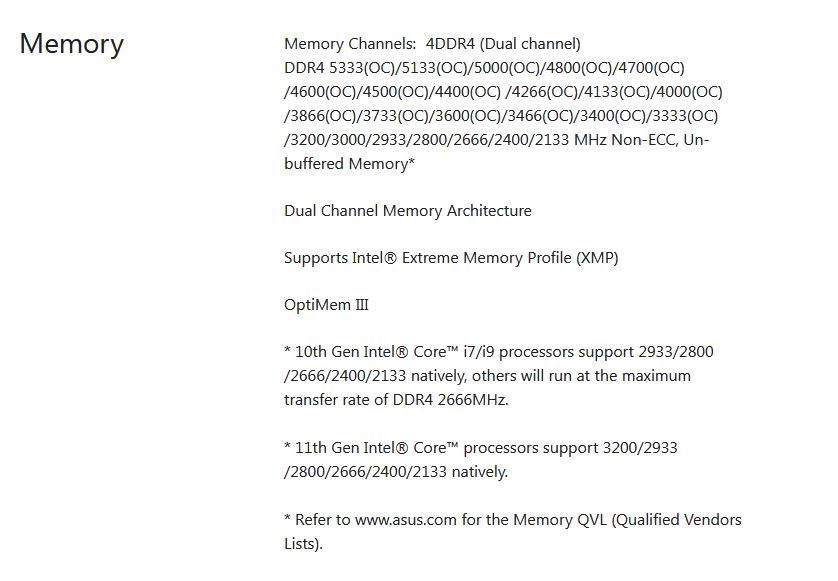
The ASUS motherboard above supports DDR4 RAM with a maximum frequency of 3200 (Not overclocked) and up to 5333 (overclocked).
The motherboard has 4 memory slots and it can support upto 128 GB (as determined by the Z590 chipset).
Let us break down each of these specs separately to understand how the compatibility works
1. Type of RAM
The first and foremost important consideration is the RAM type. When buying a new RAM stick from a different brand, the least you need to make sure is that it is of the SAME TYPE as those already installed.
You can either determine this through the motherboard specsheet or through a free utility called CPU-Z. In CPU-Z head over to the memory tab to see the type of memory installed in your PC.
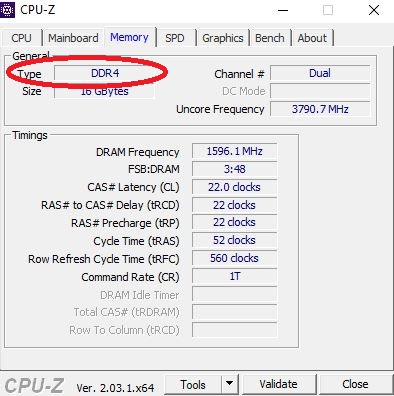
The reason why determining the RAM type is critical is because RAM types are NOT forward or backward compatible.
Meaning, you CANNOT fit a DDR5 RAM stick in a DDR4 motherboard or vice versa. Not only do RAM types have a varying number of pins, they also have the key notches located in different places.
Hence, it is physically impossible to insert an incompatible RAM stick into your motherboard.
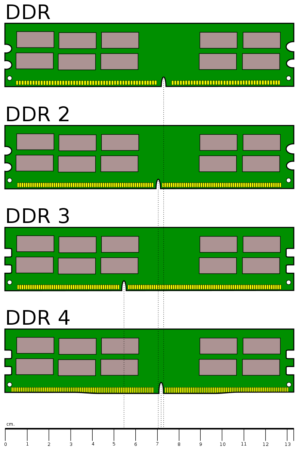
So the first step in buying a RAM stick from a different RAM brand is to figure out the RAM type.
2. Getting the Same RAM Frequency and Latency
The next important step is to ensure that the speed or the frequency of the RAM sticks is the same.
To determine what RAM frequency you have currently installed, you can again use CPU-Z.
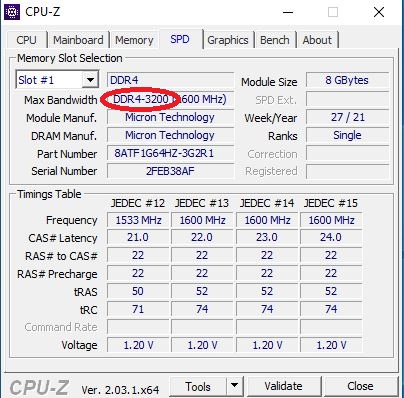
So according to CPU-Z the frequency of my RAM sticks is 3200 MHz (1600 because it is working in dual channel mode).
You can also determine the RAM frequency through a simple command with Command Prompt.
Head over to Command Prompt from the Windows Search Bar and type:
wmic memory chip get speed
You can see above that my Command Prompt shows two rows of 3200 which basically means that I have two RAM sticks installed and they both conform to 3200 MHz.
It is important to note that RAM sticks of different frequencies WILL work with each other. However, as a whole they will work at the frequency of the slowest RAM module installed.
Meaning, if you were to plug a 3000 MHz DDR4 RAM stick in a PC with DDR4 3200MHz RAM sticks installed, then the faster 3200 MHz RAM modules will also clock down to the slower 3000 MHz frequency.
Hence it is ALWAYS recommended to get RAM sticks that have the same frequency as the ones already installed.
Equally as important to avoid any issues with performance, is to make sure the RAM sticks have the same CAS latency. CAS latency essentially refers to delay in time between the command given to the RAM module and the moment it is executed.
Both the frequency and the CAS latency together determine the actual speed of the RAM sticks.
For instance, a 3200 MHz stick with a CAS latency of 8 will be able to process data in 5 nanoseconds. A 3600 MHz stick with a CAS latency of 16 will be able to process the same in 8.89 nanoseconds. Hence despite the 3200MHz having a slower frequency, it would be almost twice as fast as the 3600MHz stick (FYI. there are no 3200 MHz sticks with 8 CAS latency, this exaggeration is for educational purposes only).
You can use CPU-Z for finding the CAS latency of your sticks, again, they should ideally be the same as those installed already. You do not want the newer sticks from a different brand to be faster or slower than the older RAM sticks.
3. Check The Maximum Memory Supported Total and Per Slot
Finally, the last important consideration when purchasing a RAM stick from a different brand is to first ensure if you have an empty slot on your motherboard, and whether your motherboard can support extra RAM in the first place.
You can determine whether you have empty RAM slots on your motherboard either through physical inspection or through CPU-Z.
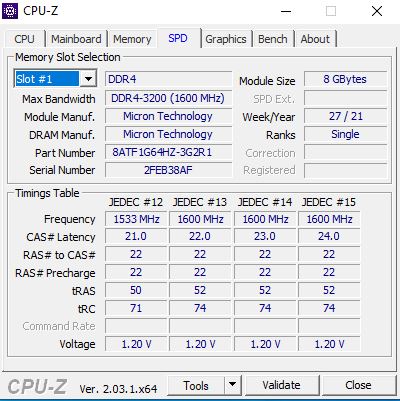
You can determine empty slots on your motherboard using CPU-Z through the drop down menu in the “SPD” tab of the utility. An empty slot will show all the fields as blank.
Once you have determined the empty slot, you need to determine the maximum RAM supported by your PC as a whole and also per slot. This can only be determined through the technical spechsheet.
Essentially, if the maximum RAM supported by your motherboard is 64 GB and it has four slots, that would equate to a maximum of 16 GB per slot. You would not be able to install a 32 GB RAM module in this motherboard’s slot.
If the maximum RAM supported is 128 GB over four slots, that would equate 32 GB RAM modules per slot (max).
As a good housekeeping measure, it is also recommended that you keep the size of the RAM modules the same (while not absolutely necessary). This reduces any chances of having issues with Dual Channel configuration.
In other words, if you have an 8 GB stick installed, it is recommended to get another 8 GB RAM stick instead of 4GB to match the size.
Also the choice of the RAM slot also matters to ensure that RAM sticks work in the dual channel mode.
Generally, you should plug the sticks in alternate RAM slots and you should always have a pair of them. In other words, if you want to increase the maximum memory by another 16 GB, then instead of getting a single 16GB RAM stick, it is recommended to get two 8 GB RAM so that you can enable dual channel for them
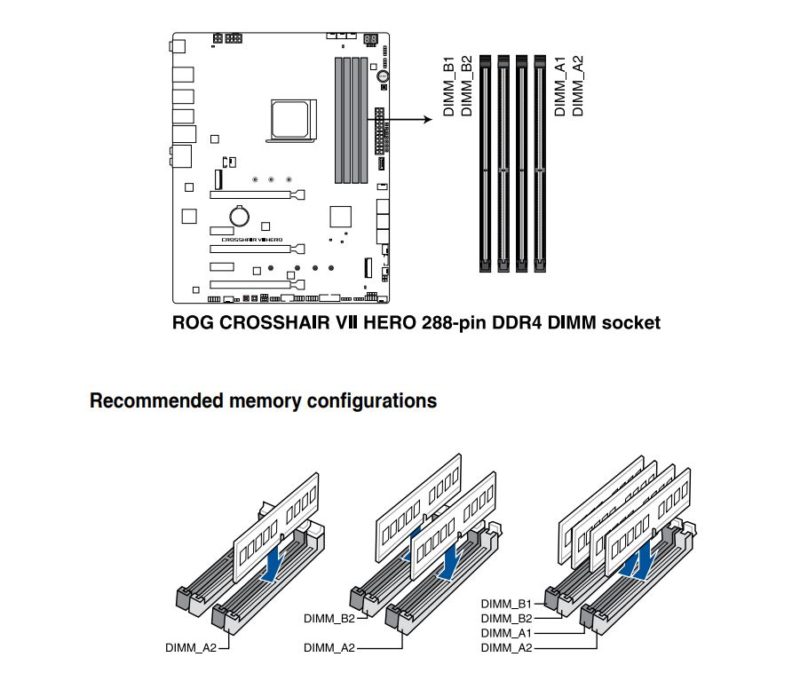
The technical specsheet for the motherboard above shows how the proper way to install RAM sticks to enable dual channel mode.
Again, dual channel will work only if you have a pair of RAM modules.
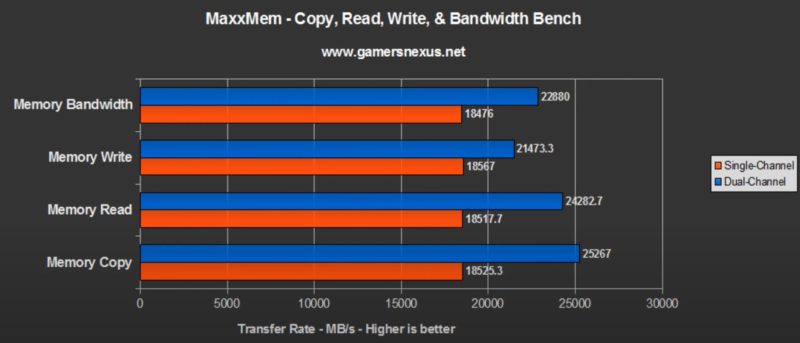
The benchmark above shows the performance gains on dual channel mode (almost 30%) which certainly cannot be ignored.
Final Words
All in all, you can certainly mix RAM brands as long as you follow the rules of compatibility.
If all this seems confusing to you, it is better to procure a RAM stick that is of the same make and model as the ones already installed to avoid confusion and frustrations.

